
伤口世界
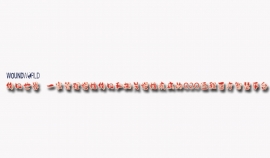
- 星期三, 26 7月 2023
表皮干细胞——细胞疗法的新希望
徐垄,柴琛,滕永军
兰州大学第一医院普外科,甘肃兰州730000
摘要:对表皮干细胞的特征、亚群、调控通路、微环境、与皮肤肿瘤的关系及临床应用作一综述,总结近年来表皮干细胞的最新研究进展,为进一步研究提供思路和研究方向。
关键词:表皮干细胞;增殖;分化;信号通路;皮肤肿瘤,临床应用
中图分类号:R6
文献标识码:A
doi:10.13885/j.issn.1000—2812.2017.01.013
收稿日期:2016—12-03
基金项目:甘肃省卫生行业科研计划项目(GSWST2011-05)
作者简介:柴琛,博士,主任医师,研究方向为创伤愈合,e-mail:chasechai@126.com,通信联系人
滕永军,博士,主任医师,研究方向为创伤愈合,e—mail:Tengyj@lan.edu.cn,共同通信联系人
Epidernal stem cell:a new hope for cell therapy
Xu Kun,Chai Chen,Teng Yong-jun
Department ofGeneral Surgery,First Hospital ofLanzhou University,Lanzhou 730000,China
Abstract:In this paper,we reviewed the characteristics,microenvironment,subpopulation,regulatory path—ways,clinical applications of epidermal stem cells(ESCs)and the relationship between skin cancer and ESCs,and summarized recent advances in ESCs to provide some ideas andresearch directions for relevant researchers.
Keywords:epidermal stem cells;proliferation;differentiation;signaling pathway;skin cancer;clinical application
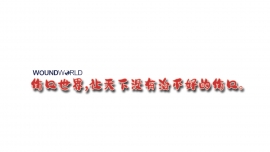
- 星期二, 25 7月 2023
表皮干细胞生物学特性研究现状
蓝蔚,刘德伍,毛远桂
南昌大学第一附属医院烧伤中心,江西省南昌市330006
蓝蔚★,男,1979年生,江西省大余县人,畲族,南昌大擘在读硕士,主要从事烧伤创面修复与皮肤组织工程方面的研究。lan_wei@163.Com
通讯作者:刘德伍,博士,主任医师,博士生导师,南昌大学第一附属医院烧伤中心,江西省南昌市330006dewuliu@126.com
国家自然科学基金(30560058)*:江西省科技厅重大科技招标项目(200604)*:江西省教育厅科研项目(赣教技字『2005】187)+;江西省卫生厅科研项目(20041038)*
中图分类号:R394.2文献标识码:A 文章编号:1673.8225 (2008)25.049364)5
收稿日期:20cr7.10.19 修回日期:2008-02.28 (07-50-10-5643/ZS●Y)
Centre of Bums,the First Affiliated Hospital of Nanchang University,Nanchang 330006. Jiangxi Province,China
Lan Wei★.Smdyiag for ma.qter’s degree, Centre of Burns,the First Amhated Hospital of Nanchang University,Nanchang 330006, Jiangxi Province。China Lan wei@163.Com
Correspondelice to: Liu De-wu,Doctor, Chief physician, Tutor of doctor, Centre of Burns,the First Affiliated Hospital of Nanchang University,Nanehang 330006,liangxi Province.Cbina dewuliu@126.tom
Supported by:the National Natural Science Foundation of China.No.30560058+:the Great Invited Tenders Foundation of Jiangxi Provincial Science and Technology Bureau. No.200604*:the Science Research Foundation of Jiangxi Provincial Education Bureau, No 2005一187+:the Science Research Foundation of Jiangxi Provincial Health Bureau,No, 20041038*
Received:2007..10..19 Accepted:2008-02-28
Abstract:Epidermal stem cell is a specific stem cell.which locates in epidermal basaI layer and the eminence of hair follicle.Epidermal stem cells have the characteristic of the undifferentiated cells in the morphology.and are tile biological source of the skin and its subsidiary in the development.repair and reconstruction.At present.the identification markers of epidermal stem cell include integrin,keratin.proliferating cell nuclear antigen,genic material and connectin.The proliferation and differentiation of epidermal stem cell arc influenced by many factors.such as integrin.signal transduction pathway and cytokines.Current researches of epidermal stem cell in skin wound healing,building of tissue.engineered skin,gene therapy and other areas have made great progress,but there are still many problems to wait for solving,such as establishing an absolutely recognized specific marker,the directed differentiation from embryonic stem cells to epidermal stem cells.how to mainrain its stem cell characteristics and induce large amplification.whether it will have a malignant transformation in clinical application.
Lan,W. Lu DW,Mao YG.Biological characteristics of epidermal stem cells nerves.Zhongguo Zuzhi Gongcheng Yanjiu yu Linchuang Kaugfu 2008;12(25):4936-4940(China) [wWW.zglckf.com/zglckf/ejoumal/upfiles/08—25/25k一4936(ps).pdf]
摘要:表皮干细胞是来源于胚胎外胚层皮肤组织的专能干细胞,丰要分布于表皮基底层和毛囊隆突部,形态学上具有未分化细胞的特征,在生物学方面是皮肤及其附属器发牛、修复、改建的源泉。现阶段对表皮T细胞的鉴定需采用整合素、角蛋白、增殖细胞核抗原、基因物质及连接蛋白等多个标记物,其增殖分化受整合素、信弓转导通路及细胞冈子等冈素影响。
目前表皮干细胞研究在皮肤创面修复、组织工程皮肤的构建、基因治疗等方面均L二取得显著进展,但仍存在如何确立一种绝对公认的特异标记物、从胚胎T-细胞向表皮干细胞分化培养过程中怎样维持其干细胞特性以及快速大量扩增、应用于临床是否会恶性变而产生医疗安全等急需解决的问题。
关键词:表皮干细胞;定位:标记物;增殖分化;综述文献
蓝蔚,刘德伍,毛远桂.表皮干细胞生物学特性研究现状.[J】中国组织工程研究与临床康复,2008,12(25):4936—4940
【www.zglckf.conffzglckf/ejournal/upfiles/08—25/25k一4936(ps).pdf]
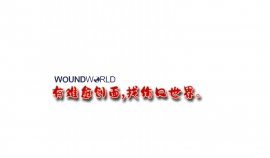
- 星期一, 24 7月 2023
氨基己酸激活人表皮干细胞中Oct4基因的表达
刘惠玲1,伍明俊2 9陈关霞1,李美蓉1,伍志强1,赵亚力1,韩为东1,孙晓艳1
1解放军总医院基础医学所,北京100853;2中国医学科学院输血研究所血液免疫研究中心,成都 610081
摘要:目的摸索并建立表皮干细胞Oct4基因的非转基因诱导方法。方法采用RT—PCR方法,检测经6一氨基己酸刺激48h后表皮干细胞Oet4基因的转录水平。结果“氨基己酸能有效激发表皮干细胞Oct4基因的转录。结论RT—PCR方法检测表皮干细胞Oct4基因转录水平变化的准确度高、重复性好,实验步骤简单,是初步筛选诱导基凶转录表达小分子化合物的实用方法。
关键词:6一氨基己酸;表皮干细胞;Oct4
中图分类号:R 644
文献标识码:A
文章编号:1005一l 139(201 1)01-0070-03
收稿日期:2010—04—20
修回日期:2010-05—06
基金项目:国家自然科学基金项目(30730090,30901564);北京市科技新星计划资助项目(2008853)Supported by the National Natural Science Foundation of China(30730090,30901 564)
作者简介:刘惠玲,女,本科,实验师。Email:liu hui_ling垣黼u.㈣
6-aminohexanoic acid activates expression of Oct4 gene in human epidermic stem cells LIU Hui—lin91。WU Ming-jun2,CHEN Mei.xial,LI Mei—ron91,WU Zhi·qian91,ZHAO Ya—lil,HAN Wei.don91,SUN Xiao-yanl 1Institute of Basic Medical Science,Chinese PLAGeneral Hospital,Beijing 100853,China;2Research Center of Blood Immunology, Institute of Blood Transfusion,Chinese Academy ofMedical Sciences,Chengdu 610081,Sichuan Province,China The first author:LIU Hui-ling.Emall:liu_hui—ling@sohu.com
Abstract:Objective To develop the non—transgenic method for inducing transcription of oct4 gene in epidermic stem cells.
Methods Rr-PCR was performed to measure the transcription level of oct4 gene in epidermic stem cells 48h after activated by 6.aminohexanoic acid.Results 6.aminohexanoic acid effectively activated the transcription of OCt4 in epidermic stem ceils.
Conclusion RT-PCR Can accurately and repeatedly detect the transcription level of oct4 gene in epidermic stem ceils.and iS thUS a simple and practical method for screening the potential small molecular compounds expressed in inducing transcription genes.
Key words:6.Aminohexanoic Acid;Epidermal Stem Cells;Oct4
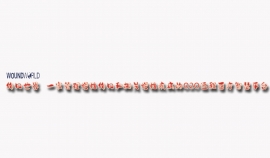
- 星期五, 21 7月 2023
基于PINK1/Parkin通路介导的线粒体自噬 探讨中药丹黄散对糖尿病溃疡的促愈机制
王庚新 1 ,张春玲 2* ,赵 伟 2 ,陈 露 2 ,邸铁涛 2 ,张 云 1 ,王艳辉 1 ,刘海艳 1
- 贵州中医药大学,贵州 550002;
- 贵州中医药大学第二附属医院
基金项目 国家自然科学基金资助项目,编号:81960805;贵州省研究生教育创新计划项目,编号:黔教合 YJSCXJH(2020)161
作者简介 王庚新,硕士研究生在读
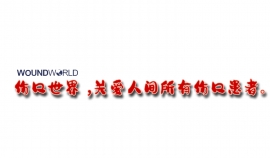
- 星期二, 18 7月 2023
人表皮角质形成细胞急性光损伤模型的构建
邓蕙妍 肖峰 高爱莉 李润祥 朱慧兰 万苗坚
DOI:10.3969/g.issn.0253-9802.2013.08.012
基金项目:广东省自然科学基金($2011010005956),广州市医药卫生科技项目(20131A011130)
作者单位:510095广州,广州市皮肤病防治所(邓蕙妍,高爱莉。李润祥,朱慧兰);510630广州,中山大学附属第三医院(肖峰,万苗坚)
通讯作者。朱慧兰,E.mail:zhlhuilan@hotmail.com;万苗坚,E-mail:w13725313465@163.oom
【摘要】
目的探讨长波紫外线(UVA)和中波紫外线(UVB)对人永生化角质形成细胞(HaCaT细胞)造成急性损伤所需要的最小剂量,为构建人表皮细胞急性光损伤模型提供科学依据。方法用不同剂量的UVA或UVB照射HaCaT细胞。观察细胞形态学改变,检测细胞增殖活性(吸光度)和凋亡率。结果2.5—10 J/era2UVA照射对HaCaT细胞无损伤,20~40 J/cm2可致细胞出现形态学改变,与空白对照组相比增殖活性降低,凋亡率增加(P<0.01);11.4~34.2 mJ/cm2UVB照射对HaCaT细胞无损伤,随照射剂量增加,细胞出现不同程度损伤,与空白对照组相比增殖活性降低,凋亡率增加(P<0.01)。结论UVA和UVB照射均可构造急性光损伤模型。HaCaT细胞对UVB敏感性更高,引起急性光损伤所需的最小剂量更低。
【关键词】
长波紫外线;中波紫外线;角质形成细胞;光损伤
Construction of acute light damage model with human epidermal keratinocytes
DENG Hui—yan.XIAO
Feng,GAO Ai—li.LI Run—xiang,ZHU Hui—lan,WAN Miao-jia,L Guangzhou Dermatosis Preventing&Curing
Institute,Guangzhou 510095,China
Corresponding
author:ZHU
Hui—lan,E—mail:zhlhuilan@hotmaiL COrn;WAN Miao-jian,E—mail:
【Abstract】
Objective
To explore a minimum dose of ultraviolet A(UVA)and ultraviolet B(UVB) that could cause immortalized keratinocytes(HaCaT cells)acute injury,and provide a scientific basis for building human epidermal cell acute light damage model.
Methods HaCaT cells were treated with different dose of UVA/UVB.The morphological changes,as well as proliferation activity and apoptosis rate were ob— served.
Result No injury changes were onservd with radiating dose of low radiation dose as 2.5—1 0 J/cm2 UVA.Yet 20-40 J/cm2 caused cellular morphological changes,with decreased proliferative activity and in—creased apoptosis rate(P<0.01).No injury changes were observed with radiating dose of 1 1.4~34.2 mJ/ cm2 UVB.However,ceils manifested with varied morphological changes,activity and apoptosis rate with te in— vrease of UVB dosage(P<0.01).
Conclusion Both UVA and UVB radiation can be used as construction to make acute light damage model.HaCaT ceils presented with more sensitivity with UVB,showing lower mini—mum required dose to cause acute light damage.As a dose-dependent model,type and degree of radiations were alternative in different experimental settings.
【Key words】 UVA;UVB;HaCaT cells;Photodamage
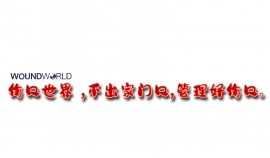
- 星期五, 14 7月 2023
人脐带间充质干细胞诱导的胰岛样细胞不同途径移植治疗 1 型糖尿病鼠
郭 璇 1 ,解 军 1 ,索金荣 2 ,李英蕊 1 ,黄 磊 1 ,马牧南 1 ,李静静 3 ,傅松涛 1,2,3
1 山西医科大学基础医学院生物化学与分子生物学教研室,山西省太原市 030001;2 山西宾大干细胞科技有限公司,山西省太原市 030001;3 山西省生物医药健康研究生教育创新中心,山西省太原市 030001 第一作者:郭璇,男,1994 年生,陕西省延安市人,汉族,2020 年山西医科大学毕业,硕士,主要从事干细胞与组织再生研究。
通讯作者:傅松涛,硕士,教授,山西医科大学基础医学院,山西省太原市 030001;山西宾大干细胞科技有限公司,山西省太原市 030001;山西省生物医药健康研究生教育创新中心,山西省太原市 030001 https://orcid.org/0000-0001-7907-0316( 郭璇 )
基金资助:山西省‘1331 工程’重点学科建设计划经费,项目负责人:解军;山西省国际科技合作基金 (201703d421022),项目负责人:解军;山西省重点研发计划 ( 国际科技合作 )(201903D421023),项目负责人:解军
引用本文:郭璇,解军,索金荣,李英蕊,黄磊,马牧南,李静静,傅松涛 . 人脐带间充质干细胞诱导的胰岛样细胞不同途径移植治疗 1 型糖尿病鼠 [J]. 中国组织工程研究,2021,25(1):78-83.
https://doi.org/10.3969/j.issn.
2095-4344.2144
投稿日期:2020-01-04
送审日期:2020-01-10
采用日期:2020-02-19
在线日期:2020-08-10
中图分类号:R459. 9;R394.2;R587.1
文章编号:
2095-4344(2021)01-00078-06
文献标识码:B
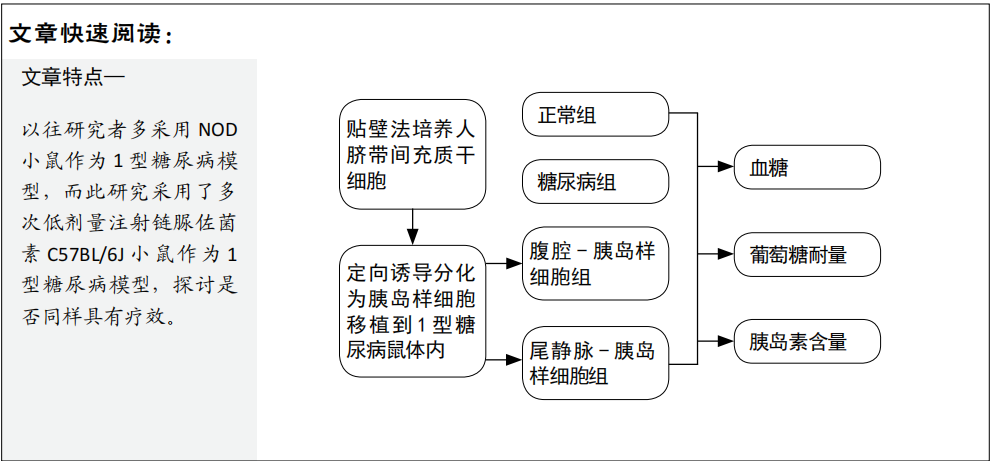
文题释义:
人脐带间充质干细胞分化为胰岛样细胞:人脐带间充质干细胞具有多向分化潜能,可分化为骨细胞、脂肪细胞、胰岛细胞等,在相关因子作用下,可使其分化为分泌胰岛素的细胞,称为胰岛样细胞。
葡萄糖耐量:检测胰岛样细胞移植后糖尿病鼠是否可以更好地响应外周血糖浓度变化,释放胰岛素,降低血糖。
摘要
背景:人脐带间充质干细胞诱导的胰岛样细胞移植于1型糖尿病鼠体内,会使血糖降低,糖尿病症状有所改善,但腹腔移植的方式少有报道。
目的:观察不同途径移植人脐带间充质干细胞诱导的胰岛样细胞对于1型糖尿病小鼠的治疗效果。
方法:选采用组织块贴壁法分离培养人脐带间充质干细胞,然后将其定向分化为胰岛样细胞。从15只雄性C57BL/6J小鼠中随机取3只小鼠做正常组,其余12只小鼠腹腔注射链脲佐菌素制备1型糖尿病模型。造模成功9只小鼠随机分为糖尿病组、尾静脉-胰岛样细胞组、腹腔-胰岛样细胞组,每组3只。造模10 d后,正常组和糖尿病组不予处理,尾静脉-胰岛样细胞组经尾静脉注射0.4 mL胰岛样细胞悬液(含5×105个细胞),腹腔-胰岛样细胞组经腹腔注射0.4 mL胰岛样细胞悬液(含5×105 个细胞)。移植后每周检测2次血糖,移植后28 d进行葡萄糖耐量实验,移植后42 d检测胰岛素水平。
结果与结论:①与糖尿组相比,尾静脉-胰岛样细胞组在移植后第10天开始血糖明显下降,一直维持到31 d,胰岛素水平升高,葡萄糖耐量改善,差异有显著性意义(P < 0.05);腹腔-胰岛样细胞组血糖、胰岛素水平、葡萄糖耐量未见明显改善;②结果提示,应用人脐带间充质干细胞诱导的胰岛样细胞治疗1型糖尿病鼠,尾静脉注射是一种比较理想的移植方式,腹腔注射的效果不佳。
关键词:人脐带间充质干细胞;1型糖尿病;胰岛样细胞;腹腔;静脉;移植;鼠;实验
Transplantation of islet-like cells induced by human umbilical cord mesenchymal stem cells via different ways for the treatment of type 1 diabetic mice Guo Xuan1 , Xie Jun1 , Suo Jinrong2 , Li Yingrui1 , Huang Lei1 , Ma Munan1 , Li Jingjing3 , Fu Songtao1, 2, 3
1 Department of Biochemistry and Molecular Biology, School of Basic Medicine, Shanxi Medical University, Taiyuan 030001, Shanxi Province, China;
2 Shanxi Binda Stem Cell Technology Co., Ltd., Taiyuan 030001, Shanxi Province, China; 3Shanxi Provincial Biomedical Health Graduate Education Innovation Center, Taiyuan 030001, Shanxi Province, China Guo Xuan, Master, Department of Biochemistry and Molecular Biology, School of Basic Medicine, Shanxi Medical University, Taiyuan 030001, Shanxi Province,China
Corresponding author: Fu Songtao, Master, Professor, Department of Biochemistry and Molecular Biology, School of Basic Medicine, Shanxi Medical University, Taiyuan 030001, Shanxi Province, China; Shanxi Binda Stem Cell Technology Co., Ltd., Taiyuan 030001, Shanxi Province, China; Shanxi Provincial Biomedical Health Graduate Education Innovation Center, Taiyuan 030001, Shanxi Province, China
Abstract
BACKGROUND: Transplanting islet-like cells induced by human umbilical cord mesenchymal stem cells (hUC-MSCs) into type 1 diabetic mice can reduce blood glucose level and improve the symptoms of diabetes mellitus. However, there are few reports on intraperitoneal transplantation.
OBJECTIVE: To study the therapeutic effect of transplantation of islet-like cells induced by hUC-MSCs in different ways for the treatment of type 1 diabetic mice.
METHODS: The hUC-MSCs were isolated and cultured by tissue explants adherent method and differentiated into islet-like cells. The 3 of 15 male C57BL/6J mice were used as normal group, and the remaining mice were taken to prepare a mouse model of type 1 diabetes using intraperitoneal injection of streptozotocin. After successful modeling, nine model mice were randomly divided into diabetes group, tail vein-islet-like cells group, and abdomen-islet-like cells group, with three mice in each group. After 10 days of modeling, the normal group and diabetic group were not treated. The tail vein-islet-like cells group was injected with 5×105 cells/0.4 mL islet-like cells via the tail vein and the abdomen-islet-like cells group was intraperitoneally injected with 5×105 cells/0.4 mL islet-like cells. During the treatment, the blood glucose and insulin levels were measured twice a week; glucose tolerance test was performed at 28 days after cell transplantation; and fasting insulin level was detected at 42 days after cell transplantation.
RESULTS AND CONCLUSION: (1) Compared with the diabetic group, in the tail vein-islet-like cells group, the blood glucose level began to decrease on the 10th day after transplantation and maintained until the 31st day, and the insulin level and glucose tolerance significantly improved (P < 0.05). However, there was no significant improvement in blood glucose level, insulin level and glucose tolerance in the abdomen-islet-like cells group. (2) To conclude, transplantation of hUCMSCs induced islet-like cells for the treatment of type 1 diabetic mice via tail vein is an ideal transplantation method, and the effect of intraperitoneal injection is unsatisfactory.
Key words: human umbilical cord mesenchymal stem cells; type 1 diabetes mellitus; islet-like cells; abdomen; vein; transplantation; mouse; experiment
Funding: the Fund for Shanxi “1331 Project” Key Subject Construction (to XJ); The International Scientific and Technological Cooperative Foundation of Shanxi
Province, No. 201703d421022 (to XJ); Key R&D Program of Shanxi Province (International Cooperation), No. 201903D421023 (to XJ)
How to cite this article: GUO X, XIE J, SUO JR, LI YR, HUANG L, MA MN, LI JJ, FU ST. Transplantation of islet-like cells induced by human umbilical cord mesenchymal stem cells via different ways for the treatment of type 1 diabetic mice. Zhongguo Zuzhi Gongcheng Yanjiu. 2021;25(1):78-83.
